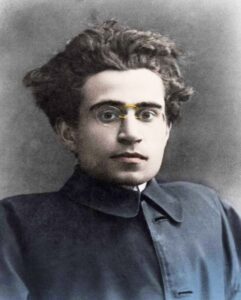Ram Manohar Lohia : Socialism
Ram Manohar Lohia (1910–1967), a prominent Indian freedom fighter and socialist thinker, developed a distinctive vision of socialism rooted in India’s socio-cultural realities. Unlike Nehru’s Fabian socialism or the Soviet-style centralization, Lohia advocated for a decentralized, non-violent, and culturally sensitive socialism that addressed the unique challenges of Indian society.
Core Ideas of Lohia’s Socialism
- Decentralized Socialism:
- Lohia emphasized decentralization of political and economic power, advocating for self-reliant village economies.
- He believed in empowering local governance systems, such as Panchayati Raj, to foster participatory democracy.
- Equal Emphasis on Economic and Social Justice:
- For Lohia, socialism was not limited to economic redistribution but also addressed caste, gender, and linguistic inequalities.
- He proposed policies targeting both material and social disparities.
- Four Pillars of Socialism:
- Lohia outlined four broad goals for a socialist society:
- Equality: Reduction of disparities in wealth, caste, and opportunity.
- Freedom: Individual liberty and political democracy.
- Decentralization: Local self-governance and economic self-sufficiency.
- Non-Violence: Achieving social change through peaceful means.
- Lohia outlined four broad goals for a socialist society:
- Seven Revolutions (Sapta Kranti):
- Lohia proposed seven interconnected revolutions to address systemic injustices:
- Against inequality of wealth.
- Against caste-based discrimination.
- Against gender inequality.
- Against imperialism.
- Against the domination of the private sector in critical industries.
- For protection of the environment and natural resources.
- For fostering a scientific temper and cultural integration.
- Lohia proposed seven interconnected revolutions to address systemic injustices:
- Caste and Class Synergy:
- Unlike Marxists, Lohia saw caste and class as intertwined in India. He argued that addressing caste discrimination was essential to achieving socialism.
- He advocated for affirmative action, including reservations for lower castes and women, to dismantle systemic inequalities.
- Opposition to Western-Style Industrialization:
- Lohia critiqued large-scale industrialization as unsuitable for India, advocating for appropriate technology and small-scale industries tailored to Indian conditions.
- Bridging the Gap Between Urban and Rural India:
- Lohia emphasized reducing the disparity between urban and rural areas by promoting rural development and curbing urban-centric policies.
Key Features of Lohia’s Economic Vision
- Equal Economic Development:
- Advocated for policies ensuring equitable distribution of resources and opportunities, with a focus on uplifting marginalized sections of society.
- State and Private Sector Role:
- Lohia supported a mixed economy but emphasized the importance of the state in controlling key industries and redistributing wealth.
- Simple Living and Self-Sufficiency:
- Encouraged simplicity in governance and personal lifestyles to minimize waste and promote sustainability.
- Employment and Poverty Alleviation:
- Advocated for policies that provided employment at the grassroots level, especially through rural development and agricultural reform.
Lohia’s Critique of Nehruvian Socialism
- Centralization of Power:
- Lohia criticized Nehru’s socialism for its top-down approach and over-reliance on centralized planning and bureaucracy.
- He argued that this model alienated rural populations and perpetuated inequalities.
- Neglect of Caste and Social Inequalities:
- Lohia believed Nehru’s socialism focused excessively on economic issues while neglecting social problems like caste and gender discrimination.
- Excessive Industrialization:
- Lohia opposed large-scale industrial projects like dams and factories, arguing that they displaced rural communities and destroyed traditional livelihoods.
- Overreliance on Western Models:
- Lohia critiqued Nehru’s adoption of Western economic models, advocating for solutions grounded in Indian culture and traditions.
Relevance of Lohia’s Socialism
- Decentralization in Governance:
- Lohia’s vision of local governance remains relevant in discussions on strengthening Panchayati Raj institutions and community-driven development.
- Social Justice Movements:
- His emphasis on caste, gender, and linguistic equality continues to inspire contemporary social justice movements in India.
- Sustainability and Rural Development:
- Lohia’s ideas on small-scale industries and sustainable rural development resonate in today’s discourse on environmental conservation and equitable growth.
- Critique of Urban-Centric Policies:
- Lohia’s advocacy for reducing rural-urban disparity aligns with ongoing efforts to address the neglect of rural India.
Critiques of Lohia’s Socialism
- Idealism vs. Practicality:
- Critics argue that Lohia’s vision, while morally compelling, lacked concrete strategies for implementation in a complex society like India.
- Underestimation of Industrialization:
- Lohia’s opposition to large-scale industrialization is viewed by some as overly simplistic, given India’s need for infrastructure and economic modernization.
- Fragmented Political Influence:
- While Lohia’s ideas inspired many regional and caste-based movements, they did not coalesce into a cohesive national strategy.
Legacy and Conclusion
Lohia’s socialism offers a unique and context-sensitive framework for addressing India’s socio-economic challenges. His focus on decentralization, social justice, and cultural inclusivity provides an alternative to top-down development models. While his (Lohia) ideas were often seen as radical or idealistic, they remain a source of inspiration for grassroots movements and policymakers striving for a more equitable and inclusive India. Lohia’s vision continues to challenge dominant narratives, advocating for a socialism that is as much about equity and dignity as it is about economic redistribution.















Post Comment